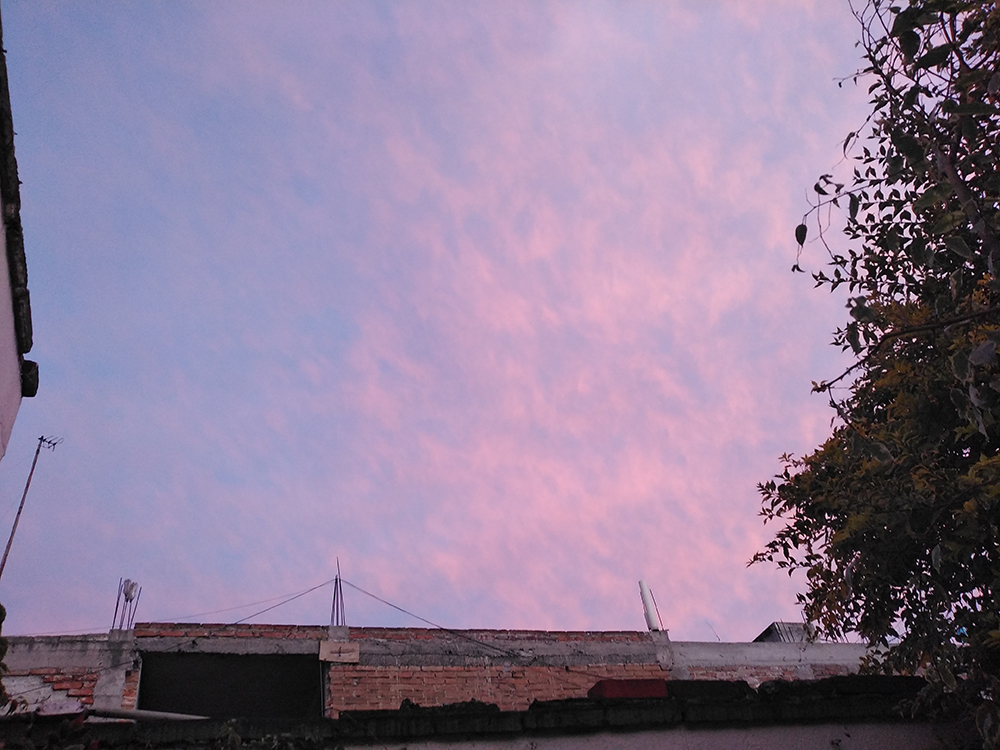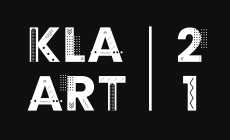Gloria Kiconco, Crater Invertido — Mexico
At the end of my residency with Cráter Invertido, I left México City and boarded my plane back to Uganda carrying 60 copies of the bilingual zine we had created, You Are Lost, You Are Here X (Estás Perdidx, Estás Aqui X). I was elated to have a tangible product, the outcome of a collaborative process, to share when I got back home. But it was only in the two weeks towards the end of the residency that tangible results began to manifest through the collective images we drew and the sample prints that rolled out of the risograph printer pieced together into long sheets of the zine before it was folded into its final form. I remembered how in that last week, when it seemed the time wouldn’t be enough and the outcome was uncertain, that I’d said to someone, trust the process. I was talking about the plan the main editorial team (Sari Dennise, Jazael Olguín Zapata, and Tona Kinich) and I had put together. When I said trust the process, I meant the collaborative practices we had agreed to that would manufacture content, the translating taken on by Andrea Fuego, the format of the zine that would embrace the content, and the printing and binding that would ensure it done in time to present to the collaborators. In truth, the process was bigger than that and it reached back to a time before I even had my visa to go to Mexico. A time where all I had was a loose concept for the residency and a few anchoring points to guide the work.
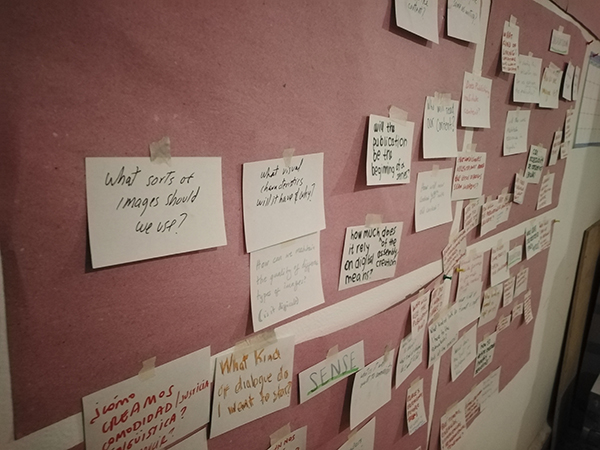
Images
My writing process has been years in the making, but by the time I began the residency, I was focused on writing sharp resonant images. I wanted to move away from cerebral poetry towards intimate storytelling. There were images that stuck with me as I travelled in the first month of the residency. They didn’t come to me from the cobbled streets, the rich food or rich history in Oaxaca where I stayed with Diego, Dasha, and their daughter Simona. They didn’t come to me from the overwhelming heights and the tense, layered legacy of Monte Albán. They didn’t come from the safety, solidarity, and shared grievances at an all women’s encounter in the mountains above San Cristóbal de las Casas. They didn’t come from these broad sweeping moments or broad sweeping landscapes. They came from the in-between moments. From watching families at 10 pm at the train station as I waited for a taxi. From walking with Jazael and Maria through a pop-up carnival juxtaposed against a gentrified neighbourhood. From a story Sari recounted about the gaping, invisible aftermath of an earthquake. These concentrated images came and stayed to be built into the text that would ground the zine.

Collaborating
It was important that these images were not appropriated or exploited to create beautiful verses. Instead they were shared and the people I shared these moments with or who told me those stories saw their histories and experiences reflected in the final poems. I knew going into the residency I wanted to collaborate on the outcome, but this was a part of the collaboration I didn’t expect but did appreciate. I had seen collaboration as a way to complement my weaknesses with another person’s strengths. By the time I presented my previous work to those interested in collaborating, I looked at it more as an opportunity to let someone else guide me and others along their perspective. This method of being led felt strongest during la deriva (the drift), an aimless but intentional walk led by Valerio Fellas through a working-class neighbourhood and in the five rhythms, a movement meditation guided by Yanireth Jiménez.
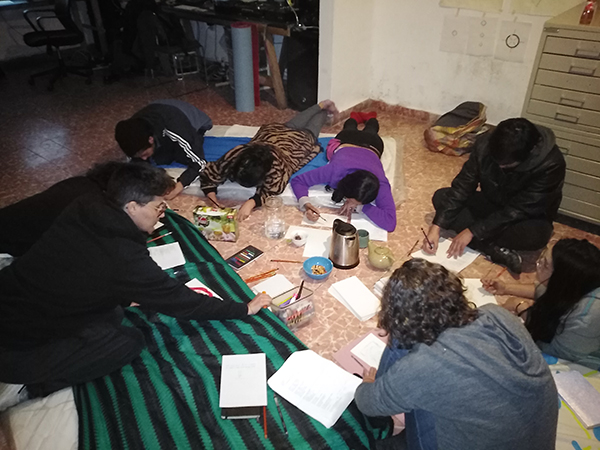
The five movements (flowing, staccato, chaos, lyrical, stillness) were adapted as a structure for the “map” that sprawled across the interior of the zine. I see the fingerprints of everyone involved in the final product. I see how my writing influenced their contributions and how they influenced the selection of poems and even in one case, the writing of the final poem in the collection.
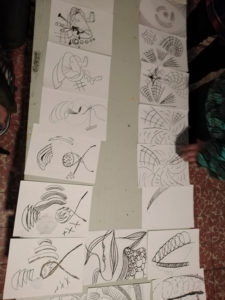
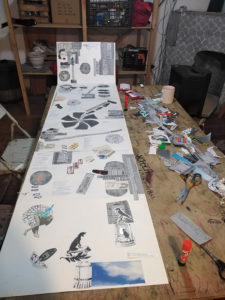

Maps
It is appropriate that a map was a part of the final zine. Though it doesn’t function as a map in the traditional sense, it does allow me to trace back through the process, which in a way started with other, more functional maps. The earliest of which were a map Sari drew of the two metro lines I would take most often during my time in México City and another map that doubled as a tablecloth at a cooking night hosted by Sofía Olascoaga on my second night in the city. Maps became central to my experience as I walked the streets of the city alone or with company. They served to orient me in my surroundings, but they lived alongside a constant feeling of being lost in a city, country, history much grander than me and the people I had met. The idea of being lost could also not exist without the experiences that made me feel I belong, that I was here, present, and recognised in my existence.
Form or Content
In sharing the final work, I decided to ask different people to read poems that were written from an experience I shared with them. Each person easily found themselves in their poem. Before I read the titular poem of the collection, I commented that I couldn’t recall when and where I had written the poem You Are Lost, You Are Here X. I knew I had written it in a moment of anxiety and many verses were drawn from personal experience, but many were also drawn from the accumulated experiences of one and a half months of the residency. It felt, in the end, like a poem that belonged to everyone, even if I was the one to write it down. I found this exciting as I shared the poem and another person read it back in Spanish, giving those present another entry point into the work. I was also excited about the form of the zine, which presented multiple entry points for one to enter the work. The accordion form of the zine opened to text in one language at the end of which one would reach the title page of the second language and start again so that it seemed you could read it forever. It wasn’t relevant which page you opened to start with. The entire thing opened up so that if you desired, instead of keeping it on a shelf, it could be displayed on a wall to engage you with its layered stories.
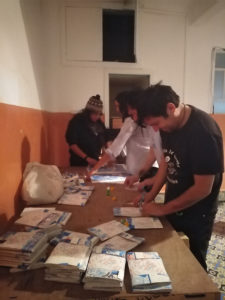
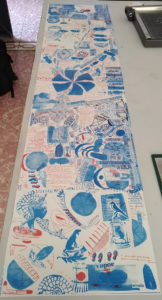
The process wasn’t clearly defined, but the anchor points were enough to guide it to an outcome everyone felt was satisfying and inspiring. We were lost often in that process but we trusted it, even if it meant we couldn’t see beyond the next step. Though the residency has come to an end, the process continues through the possibilities of the zine. Whatever builds from this comes from a trust that the intentions with which the work was created will carry on. It also means that if and when it is time for someone to guide the work in a different direction, it will evolve but continue to carry with it traces of the experiences and images from which it was inspired.
